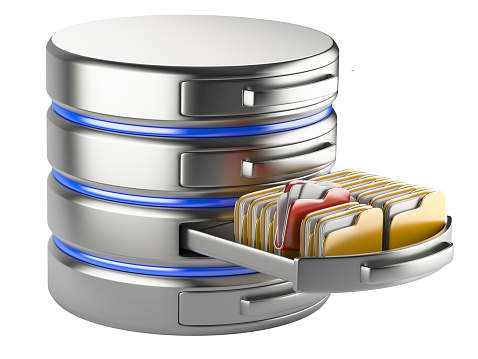Contents
In the world of web development, the idea of saving files in a database might seem appealing at first glance. After all, if structured data resides there, why not files too? In this article, we’ll delve into the reasons why storing files in a database is considered a bad practice. We’ll explore the common downsides associated with this approach and discuss alternative methods that align with industry best practices.

Downsides of Storing Files in the Database
Slower Database Queries:
Storing files in a database can adversely affect query performance. Transmitting files between the application and the database consumes more data and resources, leading to slower query execution. Furthermore, since databases use RAM to optimize performance, storing files in the database occupies valuable RAM space that could otherwise be used for frequently accessed data. This slowdown can impact the responsiveness of the database to other queries.
Database Maintenance Complexity:
Maintaining a database becomes increasingly complex as its size grows. Storing large files in the database exacerbates this issue, making tasks like backups, indexing, and defragmentation more time-consuming and prone to failure. As maintenance tasks strain the database, its overall performance and availability decline. This complexity is particularly pronounced in replica sets, potentially causing synchronization problems.
Complexity of Storing and Serving Files:
When files are stored in a database, they often need to be converted for proper storage, whether as text in base64 format or as binary data. This requires additional application logic to handle conversion, both when saving files to the database and when retrieving them. These conversions add an extra layer of complexity to the application and introduce points of failure. Moreover, storing files in base64 format consumes more space than their original size.
Increased Costs and Database Limits:
Storing files in a database increases the consumption of RAM, which is more expensive than hard disk storage. This can escalate costs, especially for applications that require substantial RAM resources. Database systems also impose size limitations; MongoDB documents are capped at 16MB, and PostgreSQL columns at 1GB. Larger files necessitate special handling, such as using GridFS in MongoDB or dedicated tables for large objects in PostgreSQL.
Other Downsides:
Increased Costs: RAM usage in larger databases can be costly.
Database Limits: Constraints on document and column sizes in various databases.
Resource Allocation: RAM resources prioritized for certain data.
Database Performance: Increased strain during maintenance tasks.
Best Alternatives for File Storage
File System Storage:
Storing files on the file system is a widely used practice. It offers convenience for local access and interaction with files. Node.js provides built-in modules like fs/promises for file system manipulation. However, keep in mind that platforms like Heroku have short-lived file systems, making it unsuitable for long-term file storage.
Cloud Storage:
Cloud storage is a preferred solution for larger applications due to its benefits in backups, redundancy, delivery, and access control. Popular options include:
AWS S3: Amazon’s object storage service for scalable, durable storage.
Cloudinary: A media-focused solution optimized for image and video storage, built on AWS S3.
DigitalOcean Spaces: A user-friendly storage service similar to AWS S3.
Backblaze B2: A cost-effective alternative to AWS S3 with a focus on security and encryption.
Tip: Use tools like websiteplanet image compressor, ilovemyimg etc to compress images as per your need and then store them
Conclusion:
Storing files in a database might seem convenient at first, but it comes with significant downsides that impact performance, maintenance, and complexity. Instead, industry best practices advocate using alternatives such as file system storage or cloud storage solutions like AWS S3, Cloudinary, DigitalOcean Spaces, or Backblaze B2. While there are cases where storing files in a database can be acceptable, understanding the trade-offs and exploring better storage options will ultimately lead to more efficient and scalable applications.
✨ Thank you for reading and I hope you find it helpful. I sincerely request for your feedback in the comment’s section.


